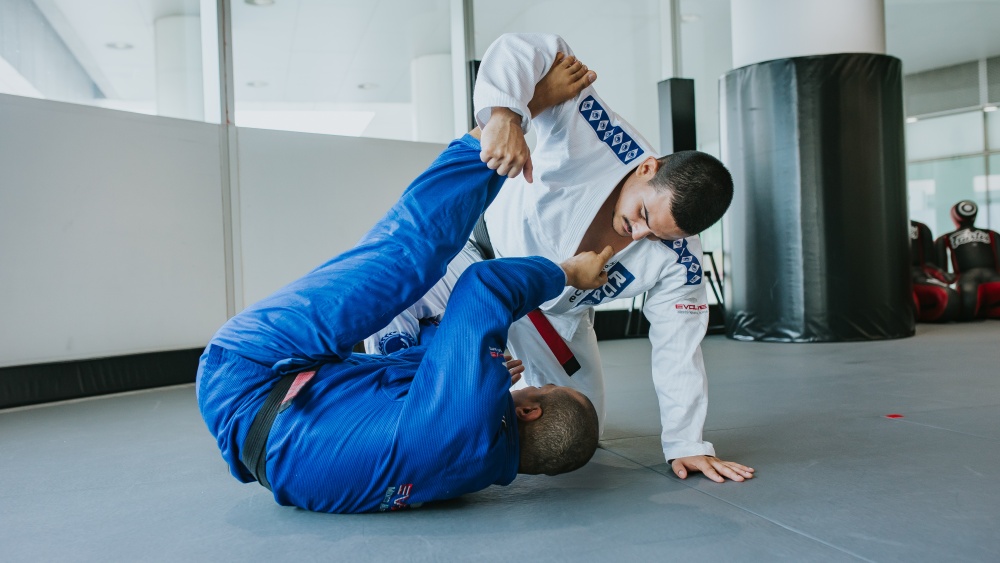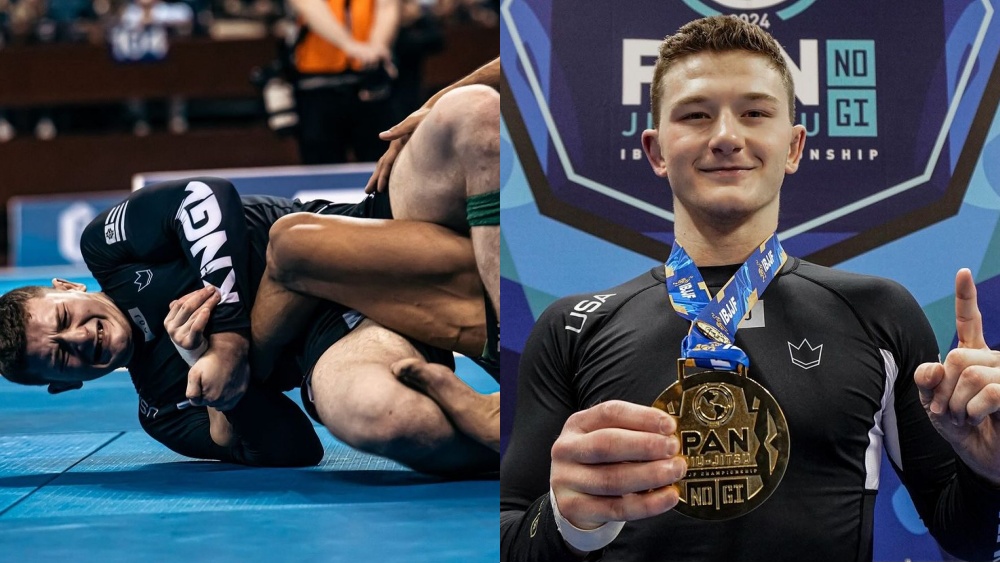An intermediate grappler’s journey differs significantly from a beginner’s. For a beginner, it is quite normal to make mistakes, and is actually expected since you’re still new to the sport. As a beginner gets more advanced, habits on the mat, whether good or bad, might persist as you continue your journey. It is, therefore, important to assess your game every now and then so that you are aware of your strengths and weaknesses.
Building up your game takes time. As one of the most influential figures in BJJ, Jean Jacques Machado, said: the more you know, the less you use. In Jiu-Jitsu, to use less, you need to know more. This article will discuss what you need to know as an intermediate grappler.
Who Is Considered An Intermediate Practitioner In BJJ?
Intermediate BJJ practitioners are those with ranks of blue to purple belt. The blue belt is considered the second adult rank in BJJ, followed by the purple belt. Practitioners with these ranks are technical enough to teach white belts and are capable of defending themselves, and can even challenge higher belts.
While the purple belt is considered the first advanced rank in most Jiu-Jitsu gyms, it is still an intermediate adult rank, all things considered. Purple belts are like the enthusiastic teenagers of the sport, eager to level up and show the brown and black belts that they can hang. Below are the things you need to consider if you are an intermediate BJJ practitioner.
Ace Your Fundamentals
Intermediate practitioners are expected to have a solid foundation in all major positions, both top and bottom. There is a big leap in skill between a blue and purple belt. A blue belt’s aim is to create a skeleton of techniques for all positions, while a purple belt should start working on combining attacks from techniques that they know. While the focus might differ, a key ingredient to rapid improvement relies on acing the fundamentals, as it is the pathway to more advanced techniques.
Fundamental techniques still work even at the highest levels of the sport. Take one of the best BJJ practitioners of all time, Roger Gracie, as an example. Roger’s game is not very flashy and relies on techniques that many consider basic. Ace your fundamentals, as they are the techniques you can rely on when the going gets tough.
Solidify Your Game
You will begin to build and refine your game at the intermediate level. This is the stage where your identity on the mat is created.
Are you leaning on becoming a guard player with a strong submission game? Do you want to be an aggressive grappler who’s strong in the standing position with relentless guard passing? Do you dream of becoming the leg locker that everyone fears?
This process will take many years of refinement, but everyone will have to go on this path of knowing who they are, BJJ-wise.
Ideally, your goal in the long run should be to become a well-rounded grappler, proficient in both offense and defense. Being an intermediate grappler means that you have already worked (or at least are working) on your guard, as this is the weakness of most white belts. You should have at least a solid understanding of both passing and guard work.
Clarify Your Goals
Have a clear goal of what sort of grappler you’d like to be five years from now. Reaching the intermediate level in BJJ is not a simple task. As the famous BJJ quote goes, “Jiu-Jitsu is for everyone. But after a few months, it’s just for half of those people, and after a few years, it’s just for a handful of rare savages”.
Undoubtedly, every intermediate BJJ practitioner has come to love the highs and lows of BJJ. Some may lean on and continue their journey as a competitor, while others will take on the path of coaching. Everyone’s reason for training BJJ is different. It is best to align your intent with your goal so that you have a clear direction on what to do moving forward.
Work On Leg Locks
The blue belt is where you should start working on leg locks. Most competitions allow leg attacks at this point, so you better have a few tricks up your sleeve. As the saying goes, it is better to have the skill and not need it than need the skill and not have it. Learn a leg lock or two. Start with the straight ankle lock and work your way to the other leg attacks as you become more experienced.
Improve Your Standup
Takedowns are some of the most bang for buck techniques you can learn. Improving your takedown game will make you a more complete grappler, as not everyone is open to learning takedowns.
The beauty of learning standing techniques is that you don’t have to learn many moves. A solid rotation of three to five takedowns is enough to make you dangerous. Consider factors such as age, body type, injuries, and athleticism when selecting your techniques. Choose the ones that will help round out your game.
If you like training in the gi, throws using gi grips may be a better option for you. Remember that the gi is an extension of your body, so always be mindful of attacks you can do using specific gi grips. In no-gi, wrestling takedowns are perhaps the better option, as single and double leg takedowns are high percentage moves.
Remove Your Bad Habits
Removing even the most basic bad habits, like looking down when passing the guard, goes a very long way. Poor posture will make you vulnerable to throws, takedowns, sweeps, and submissions. Learn to use proper body positioning to keep yourself safe from incoming attacks. Be efficient with your movements, and always follow your game plan.
Final Thoughts
Brazilian Jiu-Jitsu is a pursuit where trial and error is the primary catalyst for improvement. In order to become great in the sport, you must be open to learning and unlearning things every time you train.
Advancing to the intermediate ranks is one of the most important steps in your grappling journey. Becoming a blue or purple belt means that you spent countless hours learning your craft. Be proud of your accomplishments and stay excited because new challenges are always on the horizon.
You may also like:




















